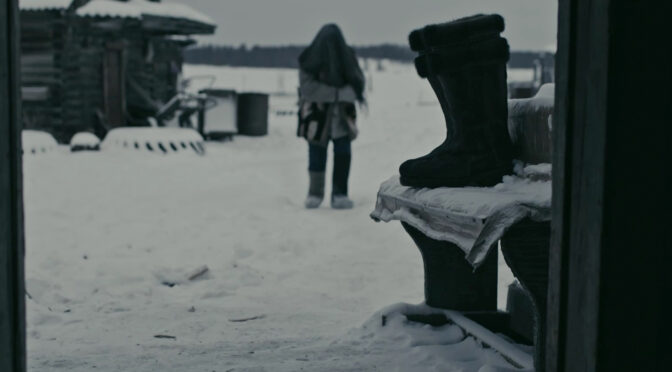 The Sakha Republic (Yakutia) in far northeastern Russia is far removed from the political, social, linguistic, and cosmopolitan realities of Moscow or St Petersburg. In this environment, a local cinema culture has flourished, and Dmitry Davydov’s SCARECROW (PUGALO) brings Sakha cinema to an international audience at IFFR.
The Sakha Republic (Yakutia) in far northeastern Russia is far removed from the political, social, linguistic, and cosmopolitan realities of Moscow or St Petersburg. In this environment, a local cinema culture has flourished, and Dmitry Davydov’s SCARECROW (PUGALO) brings Sakha cinema to an international audience at IFFR.
The mundane, the strange, and the magical are at odds in SCARECROW, a communal tragedy that follows a traditional healer’s lonely, squalid life. Barely any character names are used, and relationships and storytelling roles emerge slowly. The isolated townspeople form their own tight-knit community that knows the comings and goings of all – and the healer (who remains unnamed) is squarely on the outside of this dynamic unless she is needed to save a life at great cost to her own wellbeing. The uneasy confluence of modern medicine and traditional healing sits at the film’s heart – and the healer’s spiritual, intuitive services provide needed relief when surgical resources are stretched thin in this remote region.
SCARECROW never shies away from the blood, bones, and viscera holding life together, approaching its world with a grim tactility. The healer’s hut is covered in debris, broken furniture, and mouse corpses, and she imbibes vodka with a revitalising desperation after each taxing call. The physical difficulty of her art is summoned in tight angles capturing beads of sweat and breaths of exertion. At other times, camera angles stay wide and shots are held still for long stretches, which emphasise quiet, uneasy meetings – stilted conversations while sharing a smoking break – as well as the oppressive solitude of winter. The inhospitable environment comes through as the snow crunches under feet and squeaks under tires.
As the film juxtaposes modern hospital settings with seemingly magical remedies, SCARECROW morphs into a psychological and spiritual horror film. Threats of society, nature and alcohol are at least understandable, but the unexplained forces this small community relies on slowly begin to show their destructive sides. The effectiveness of this switch into more overt genre storytelling largely comes down to Valentina Romanova’s tortured central performance. There is no question her healer is on a path she cannot avoid, and she can only try – in vain – to mitigate the damage to herself and others as each miracle takes a toll on body and soul.
At only 72 minutes, SCARECROW works in fragments and saves its most powerful blessing – or curse – for last. It is a powerful examination of the holy fool archetype, where grace and destruction are two sides of the same coin.

